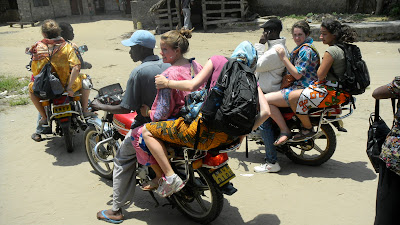Last Sunday after crossing the border into Tanzania and continuing on, we arrived at the city of Arusha. Our base for the week was the UAACC. The establishment is run by Pete and Charlotte O’Neal, native US citizens. Pete was a lead member of the leftist Black Panthers in Kansas City during the 1960s. He ran into legal trouble and fled the country in 1970 to avoid legal repercussions. Charlotte, 19 at the time, joined him, and the couple spent a few years in Algeria before moving to Tanzania. Charlotte is able to return to the US and does so frequently to visit family.
 |
| Malcolm X Theater: Just one of the buildings named after leading activists |
In Arusha, the couple operate this community center which hosts groups like ours. And wow, they knew how to host us! We had an amazing time packed full of opportunities and tastes of home (think taco night).
 |
| Stage for periodic performances |
The O’Neals have taken in 23 orphans from the Arusha area, and they house them on the grounds of the UAACC. They provide education, art classes, and athletic opportunities to them free of charge.
 |
| Children's facilities, garden, and basketball court |
Our first night at the UAACC, we watched a documentary on the O’Neals, entitles “A Panther in Africa.” It was really interesting to see it and then ask Pete about key events. He says now that he realizes he was radical in his early years; he expressed happiness that he has become a better person. He still supports the overarching mission of the Black Panthers, which he says was much more about community service than about violence.
 |
| The walls and buildings of the center are covered in artwork |

















































